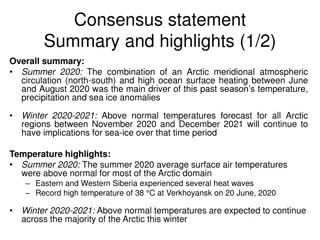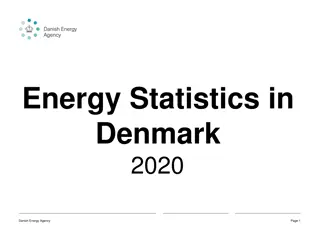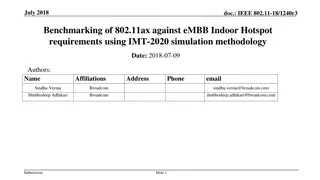
Utilizing Integration for Area Calculations
Explore the concept of finding the area under a curve using definite integrals and antiderivatives. Learn how to determine areas bounded by curves and the x-axis through examples involving parabolas and trigonometric functions.
Download Presentation

Please find below an Image/Link to download the presentation.
The content on the website is provided AS IS for your information and personal use only. It may not be sold, licensed, or shared on other websites without obtaining consent from the author. If you encounter any issues during the download, it is possible that the publisher has removed the file from their server.
You are allowed to download the files provided on this website for personal or commercial use, subject to the condition that they are used lawfully. All files are the property of their respective owners.
The content on the website is provided AS IS for your information and personal use only. It may not be sold, licensed, or shared on other websites without obtaining consent from the author.
E N D
Presentation Transcript
Applications of integration Applications of integration - - Area Area
Area under a Curve as a Definite Integral If f(x) is nonnegative and integrable over a closed interval [a, b], then the area under the curve ? = ?(?) over [a, b] is the integral of from a to b, ? ? = ? ? ?? ? Finding Area Using Antiderivatives To find the area between the graph of ? = ?(?) and the x-axis over the interval [a, b], do the following: 1. Subdivide [a, b] at the zeros of . 2. Integrate over each subinterval. 3. Add the absolute values of the integrals.
Example Calculate the area bounded by the x-axis and the parabola ? = 6 ? ?2 Sol. We find where the curve crosses the x-axis by setting ? = 0 = 6 ? ?2= (3 + ?)(2 ?) Which gives x=-3 and x=2 as sketched below:
The curve is nonnegative on [-3,2]. The area is 2 2 (6 ? ?2).?? = 6? ?2 2 ?3 = 12 2 8 18 9 2+ 9 3 3 3 3 2 (6 ? ?2).?? = 20.8333 3 Example Figure below shows the graph of the function ? ? = sin? between ? = 0 ??? ? = 2? Compute (a) The definite integral of (x) over [0,2?] (b) The area between the graph of (x) and the x-axis over [0,2?]
Sol. The definite integral for ? ? = sin? is given by: 2? 2?= 1 1 = 0 sin??? = cos?0 0 The definite integral is zero because the portions of the graph above and below the x-axis make cancelling contributions. The area between the graph of (x) and the x-axis over [0,2?] is calculated by breaking up the domain of sin x into two pieces: 1. the interval [0,?] over which it is nonnegative. 2. the interval [?,2?] over which it is nonpositive. ? ?= 1 1 = 2 sin? ?? = cos?0 0
2? 2?= 1 1 sin? ?? = cos?? = 2 ? The second integral gives a negative value. The area between the graph and the axis is obtained by adding the absolute values ???? = 2 + 2 = 4 Example Find the area of the region between the x-axis and the graph of f(x) ? ? = ?3 ?2 2? , 1 ? 2
First find the zeros of . Since ? ? = ?3 ?2 2? = ? ?2 ? 2 = ? ? + 1 ? 2 The values where f will be zero are x = 0,-1 and 2 The values subdivide the [-1,2] into two intervals [-1,0] on which ? 0 and [0,2] on which ? 0 . We integrate f over each subinterval and add the absolute values of the calculated integrals. 0 0 ?4 4 ?3 1 4+1 5 (?3 ?2 2?)?? = 3 ?2 = 0 3 1 = 12 1 1 2 2 ?4 4 ?3 = 4 8 3 4 0 = 8 (?3 ?2 2?)?? = 3 ?2 3 0 0 The total enclosed area is obtained by adding the absolute values of the calculated integrals, 5 8 3 =37 12 ???? = 12+
Example Find the area of the shaded region The area of the rectangle bounded by the lines ? = 2, ? = 0 , ? = ? ??? ? = 0 is ?rea of a rectangle = L W = 2? The area under the curve ? ?= ? + 0 0 = ? (1 + cos?)?? = ? + sin?0 0 Therefore the area of the shaded region is 2? ? = ?
Example Find the area of the shaded region Sol. The area of the rectangle bounded by the lines ? =? 6 , ? =5? 6, ? = sin? 6= sin5? 6=1 2 ??? ? = 0 ?rea of a rectangle = L W =1 5? 6 ? =? 2 6 3 The area under the curve
5? 6 5? 6= cos5? 6 cos? sin? ?? = cos? = ? 6 6 ? 6 3 2 3 2 = = 3 Therefore the area of the shaded region is 3 ? 3






















